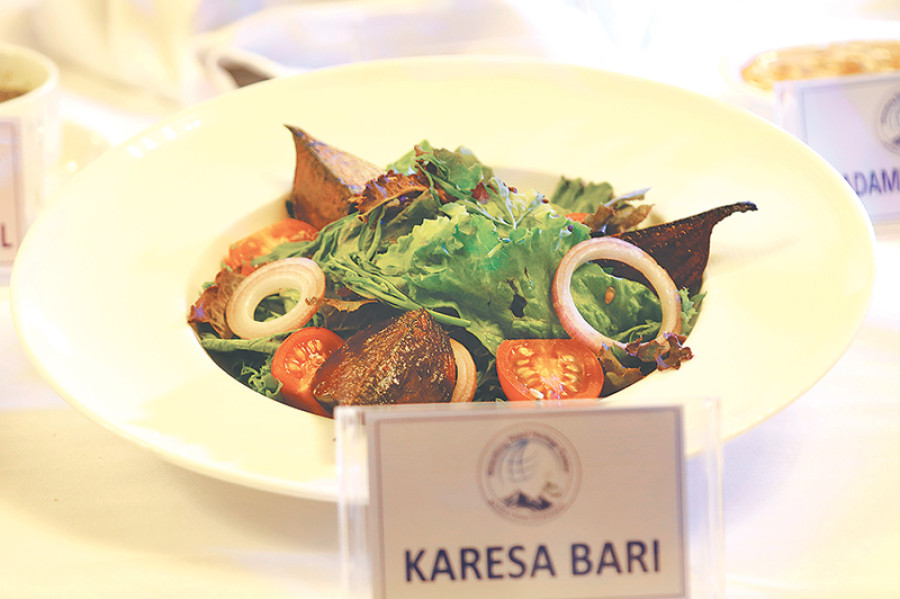Opinion
Delicious destinations
Gastronomy tourism is flourishing globally, and Nepal is attempting to catch up
Sunil Sharma
Gastronomy tourism has emerged as an alternate to mainstream tourism that offers mainly sightseeing. Tourism designed for food lovers makes an impact on the entire value chain such as agriculture and the food industry and helps in poverty reduction. Changing consumer behaviour requires destinations to brace themselves and offer wholesome living as an experience. Visitors are seeking a ‘different kind of rich experience’ in the places they go to. The element of food has become pivotal among visitors while looking for new destinations.
For example, more than 118 million real traveller reviews on Booking.com revealed that while choosing the next travel destination, a vast majority ( 75 percent) said that they would likely travel somewhere known for its great food and beverages. Likewise, 79 percent of travellers between the ages of 18 and 34 years, known as millennials, consider travelling somewhere that’s specifically known for its gastronomic delights. Almost one in 10 travelled in the last year to fulfil their hobby of enjoying fine dining.
Forgotten food culture revived
Nepal’s rich food culture has long been forgotten. In order to establish culinary tourism in Nepal, the Campaign for Globalisation of Nepalese Cuisine has selected 20 authentic Nepali signature dishes and has also finalised their recipes. Moreover, the campaign has selected four authentic Nepali sauces. The Experience Nepal: Cuisine & Culture campaign was launched in Kathmandu to globalise Nepali cuisine in the international market on the occasion of the 19th anniversary of the Nepal Tourism Board. It is indeed fascinating what Nepali gastronomy has to offer.
Nowadays, people are becoming more and more interested in fine food as a profession. The burgeoning interest in gastronomy has resulted in new chefs, caterers and food bloggers emerging every day. Youngsters are more in to the food profession as it is gaining celebrity status. The Michelin star award is the ultimate award in gastronomy. It is given to chefs who embrace international dining without abandoning one’s own heritage and authentic cuisine. Bangkok alone boasts of more than 10 Michelin star award winner restaurants, reflecting how the once street food capital has transformed into the gourmet capital of the world. Unsurprisingly, Bangkok has been chosen as the venue for the upcoming fourth United Nations World Tourism Organisation (UNTWO) World Forum on Gastronomy Tourism scheduled to be held from May 30 to June 1.
New global pivot
Today, Spanish cities such as Madrid, Barcelona, San Sebastian are synonymous with food. San Sebastian has positioned itself as a gourmet destination and move forward by holding Gastronomika, the culinary world’s most prestigious annual event. San Sebastian organises a series of seminars and demonstrations where some of the world’s greatest chefs showcase their creations. Their main claim to gastronomic fame is the quality of many Michelin starred restaurants in that particular destination. San Sebastian has more Michelin stars per square mile than any other region in the world.
Many destinations have been overwhelmed with the power of food so much so that they are fighting amongst themselves to lay claim to the origin of particular delicacies. For example, the origin of the popular Indian sweetmeat known as rasgulla (or rasbari) is a subject of dispute. National Geographic reports that in 2015, the Indian state of Odisha sought a Geographical Indication (GI) tag for the sweetmeat, claiming that it was invented in Puri, and that it was first offered to the gods during the Rath Yatra in the 12th century.
Lessons for Nepal
Establishing gastronomy tourism as a product is a complex process that requires a whole ecosystem to support it. Both public and private sectors need to understand its benefits and create good communication and promotional strategies. MasterChef Australia, a culinary programme, has proved to be one of the best promotional strategies to woo tourists to Australia. In order to attract Indian tourists to Australia, the show is beamed during prime time. The show is immensely popular among Indian viewers. It is cleverly crafted and designed as cuisines are chosen from a diverse range of countries. The show has made an impact as a growing number of Indian tourists are flocking to Australia.
World renowned chef Gary Mehigan, who is also a judge of MasterChef Australia, says that he is the ultimate food tourist who does not look for monuments and cathedrals but loves to discover restaurants, markets and local food producers. In recent times, gastronomy tourism has made inroads into social media. Various accounts have been created to showcase destinations and prominent chefs’ signature dishes. These accounts have a large following. Nepali cuisine has made its mark on Instagram, and various accounts are found showcasing Nepali food. Gastronomy tourism is a force to reckon with. The motto of gastronomy tourism is ‘You cannot create experience, you must undergo it!’ Indeed, gastronomy tourism embodies intangible heritage and draws respect for culture and authenticity.
Sharma is a manager at Nepal Tourism Board




 10.12°C Kathmandu
10.12°C Kathmandu











